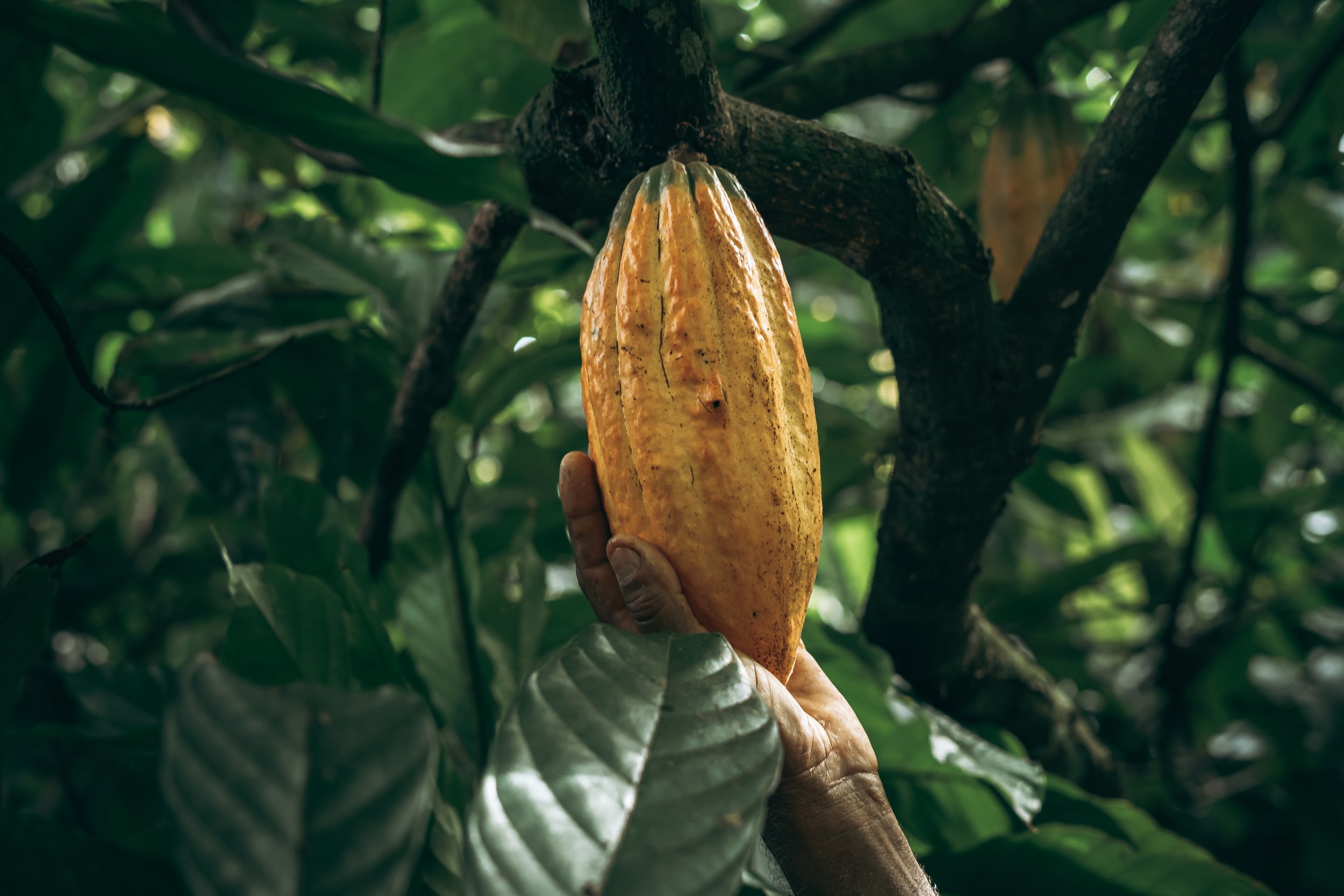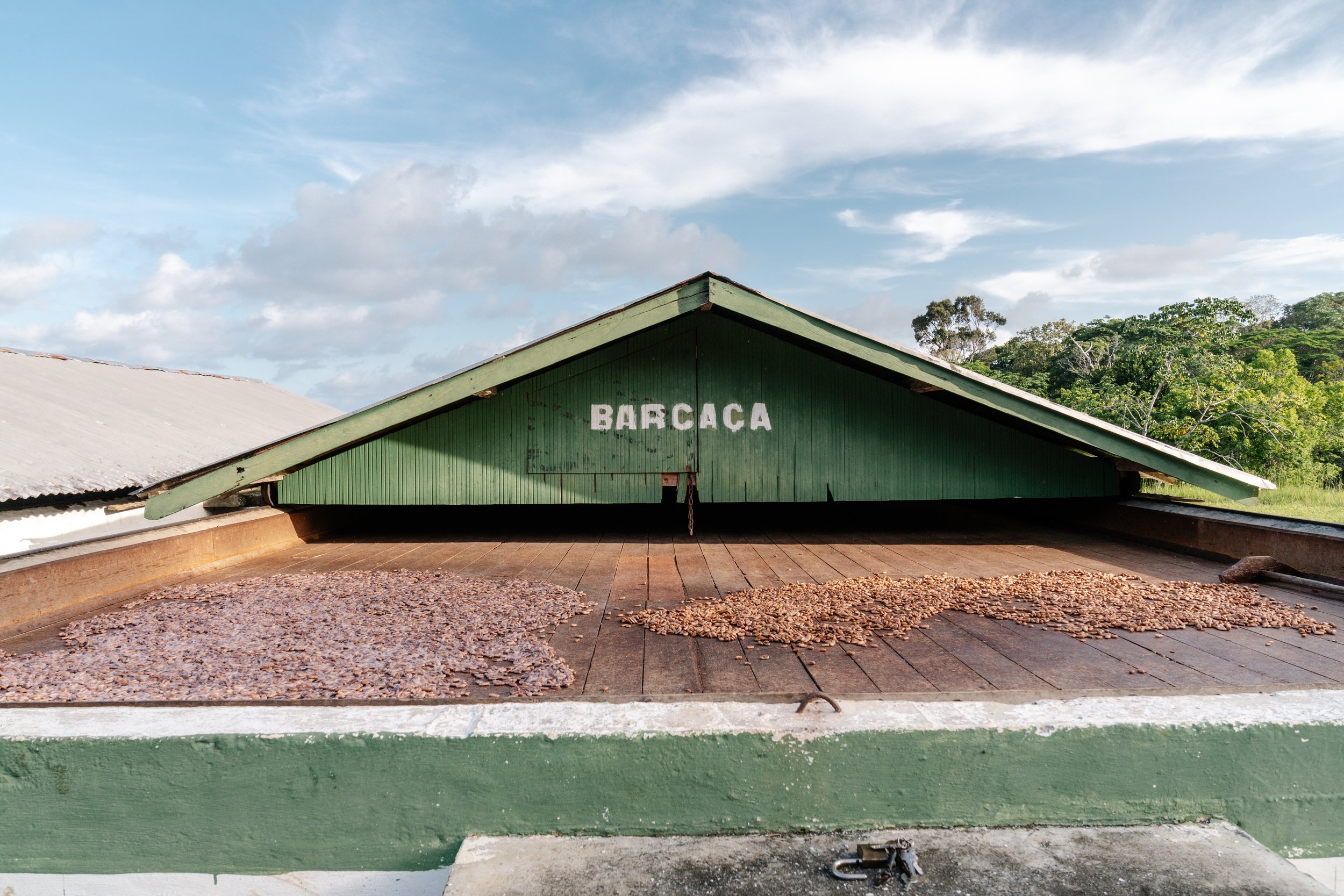What I learned about cacao
During the past few years, chocolate (or, in my case, the term cocoa would be more appropriate) has become an integral and essential part of my life.
At a point in time, I discovered there is such a thing as 100% chocolate. Most people make a weird face when I mention it, but I truly started loving it. It became a companion. Whenever in need of energy or when feeling low, it would lift me up and give me back my positive attitude towards life and boost productivity.
With time I found out about the caffeine contained in cacao. I learned that I shouldn't consume too much of it, even if no sugar was contained, since I wouldn't sleep properly, and my reaction to it would be similar to my body's response to coffee - increasing anxiety. Also, cacao is considered a source of fat in the macronutrient scale of nutrition. Thus, eating without limits started triggering weight gain (as a side note on this, though, just like nuts or avocado, the dietary vitamins and nutrients contained in it are super rich and considered a good type of fat, but should still be consumed in moderation).
It still is nowadays a comfort food; it warms me up and gives me an extra touch of care when in need. A few weeks ago, while working at the Chocolate Hotel and visiting a part of the Cacao Coast in the Northeast of Brazil, I learned a lot about cacao, and I want to share my learnings with you herewith. I also learned more about ceremonial cacao, which explained many things I felt when consuming it. But I'll come back to that later on.
For now, let's go back to the beginning.
The significant majority of the people I know like some kind of chocolate - some prefer milk chocolate, others darker options, or one of the thousand mixtures that exist out there - with sea salt, almonds, hazelnuts, fruit pieces, liquors, and the list goes on. Chocolate has become a popular consumer good in our society. But what about where it comes from?
To begin with, do you know the difference between the terms cacao, cocoa and chocolate?
Cacao refers to the tree, its pods, and the beans (which in Portuguese are called "amêndoas") inside the pods. The term cocoa is used for what comes after roasting, grinding and processing the cacao beans. Chocolate is made from cocoa solids, cocoa butter, and sugar and often includes additional ingredients such as milk and flavourings, depending on the type of chocolate. To summarize, cacao is the rawest material, cocoa is the processed product, and chocolate is the final product made from cocoa combined with other ingredients.
The chocolate you buy in supermarkets is thus a very processed final product of the original cacao; not many (if any) nutrients are left in there.
Fun (or rather scary) fact: the beans used for most commercial products are the ones with the lowest quality, sometimes even affected by fungus. It is only used for the consistency of the outcome, but of nutrients, there is little left. White chocolate is the worst of them all; it is made from only cocoa butter, sugar, and milk solids but contains no cocoa solids. Can it even be called chocolate?
Since we're already talking about the most processed final version of this good, let's rewind a bit.
Making chocolate begins with harvesting the cacao pods from the cacao tree and extracting the beans inside. (another fun fact: the beans are surrounded by a sweet, white flesh, which can be used to make cacao honey - a delicious whitish juice best consumed cold and fresh that could also be pimped with some lime juice and spices).
The beans are then fermented (in dark, wooden compartments resembling wine barrels), dried (at what they call barcaça in Portuguese - translated to barge in English), and roasted (the more you heat the product, the less nutritional value will remain) to develop their flavour. After roasting, the beans are cracked open, and the nibs inside are ground into a paste called chocolate liquor (the shell can be used to make tea). The chocolate liquor is then refined to remove any remaining solids and create a smooth texture. At this point, the chocolate can be further processed with sugar, milk, and other ingredients to create different types of chocolate. The final product is then moulded into bars, truffles, or other shapes and packaged for sale.
The versions without additional ingredients are usually too bitter for the broader audience (only a few out there have the same taste as I do 😂)
In the last few years, with a boom of sustainability in the cacao industry and the demand for more artisanal, high-quality products, I've increasingly encountered the expression "tree-to-bar". You may have too. It basically refers to the process of making chocolate where the entire production process - from growing and harvesting the cacao beans to making the chocolate - is controlled by one company or organization. This complete cycle centred in one place allows for greater control over the quality and flavour of the final product.
The production of cacao can also vary widely. Cacao is typically grown on plantations or farms in tropical regions around the world. There are several types of cacao plantations, which can differ in size, management, and sustainability practices. Here are some of the most common types of cacao plantations:
Large-scale plantations: these are large farms or estates that grow cacao on a commercial scale, often using mechanized farming methods and chemical inputs.
Smallholder farms: These are small family-owned farms that grow cacao as a cash crop, often using traditional farming methods, which is the case for one of the farmers I visited when in Itacaré - the 'cabruca' method, where they grow the cacao amid the rainforest, using the higher trees as shade providers for the crop.
Agroforestry systems (also called syntropic farming - an inspiring method developed by the Swiss Ernst Gotsch, mainly working in Brazil - there will probably be a post coming about this around here soon as well 😉): These are cacao plantations that are grown alongside other crops or trees, such as coffee, bananas, or timber, as part of a sustainable agroforestry system.
Organic plantations: These are cacao plantations that use organic farming methods, such as natural pest control and composting, to minimize synthetic inputs and promote soil health.
Fairtrade plantations: These are cacao plantations certified by fair trade organizations, which aim to ensure that farmers receive reasonable prices for their crops and promote social and environmental sustainability.
The type of plantation can affect the quality and sustainability of the cacao produced, as well as the social and economic conditions of the farmers who grow it. I was lucky enough to visit both a smallholder farm that is not only planting in the traditional matter but also incentivizing local women to fully participate in the entire production process (including taking care of the plantation and harvesting, something usually done by men), and an agroforestry system explicitly developed for the cacao crop. They are two completely different ways of going about it; however, both do it with a passion that cannot be explained in words.
As mentioned at the beginning of the post, topics related to ceremonial cacao have also somehow been increasingly appearing on my radar. This topic has been popping up through articles, talks with friends, shops, and other sources. Ceremonial cacao refers to a specific type of cacao used in spiritual and ceremonial practices by indigenous peoples in Central and South America. It is made from pure cacao paste, often with minimal processing and no added ingredients. Cacao is believed to have energetic and medicinal properties and is used in various rituals and ceremonies, such as those related to fertility, healing, and spiritual connection.
I felt hugged when I also learned about all the positive properties that this super fruit contains. Consuming cacao, particularly in the form of dark chocolate with a high percentage of cocoa, has been associated with several potential health benefits. Here are some of the most widely studied health benefits of cacao:
Improved heart health: The flavanols in cacao may help improve blood flow, lower blood pressure, and reduce the risk of heart disease.
Antioxidant properties: Cacao is rich in antioxidants, which can help protect against cellular damage and reduce inflammation in the body.
Improved brain function: The flavanols in cacao also have a positive effect on brain function, including improved memory and cognitive function.
Reduced risk of stroke: Some studies suggest that consuming cacao may help reduce the risk of stroke.
Anti-cancer properties: Some compounds in cacao have been shown to have anti-cancer properties in test-tube studies, but more research is needed to understand the potential benefits in humans.
It's worth noting that many chocolate products contain added sugar and other ingredients that can negate the potential health benefits of cacao (or also use a low-quality raw material, as previously mentioned). For the most health benefits, it's best to choose high-quality dark chocolate with a high percentage of cocoa and minimal added sugar, such as the 100% ;)
It is crazy to think that, even though Brazil is the country where I've learned so much about this sweet world of knowledge, it is accountable for a small part of the large-scale production. According to the International Cocoa Organization (ICCO), there are over 50 countries around the world that produce cocoa. However, the vast majority of cocoa (about 70-75%) is produced by just four countries: Ivory Coast, Ghana, Indonesia, and Nigeria. Other significant cocoa-producing countries include Cameroon, Brazil, Ecuador, Peru, and the Dominican Republic.
Uff... a lot of information there to digest. But I hope this gave you the knowledge you were missing about this interesting good that we consume in our routines without thinking much about the precedents of it. Unfortunately, the spread of consumption has resulted in the malpractice of many suppliers. Thus, Consumers can support sustainable cacao production by looking for products certified as sustainable or fair trade and choosing products from companies prioritizing sustainable practices. By doing so, you can help ensure that cacao cultivation remains viable and beneficial for the environment and the communities involved in its production.
As in anything, overconsumption should be avoided, and the knowledge of where the product comes from should be considered.
Next time you bite on that sweet delight, be thankful for everyone involved in its production, for it has come a long way until this final product.
Below are a few photography impressions of my immersion:
(the last picture is the Cupuaçu fruit that stems from the same family as the cacao tree. Its dried version is deliciously well combined with chocolate - a must-try when visiting Northeast Brazil).
























